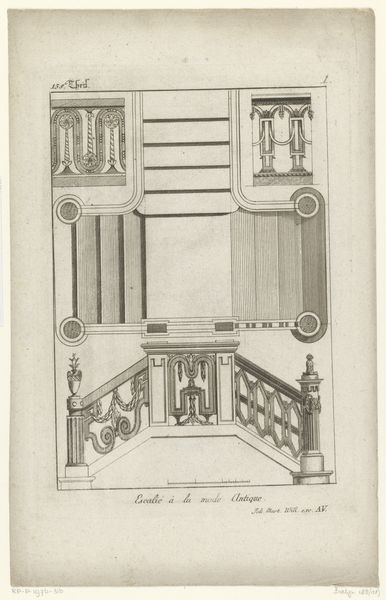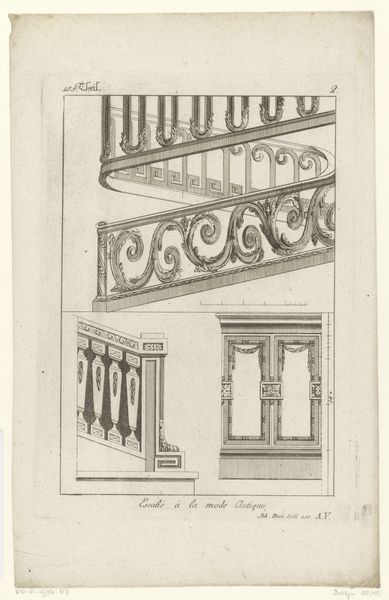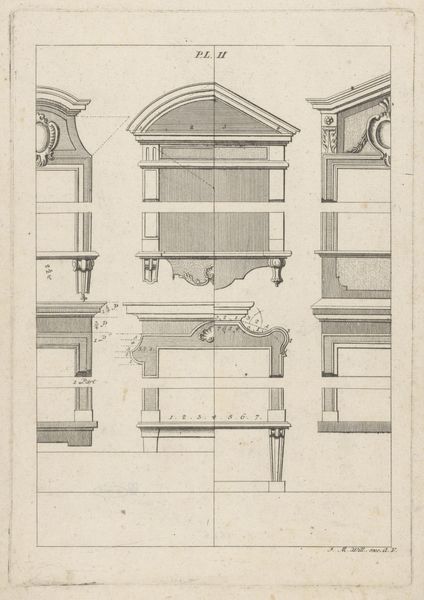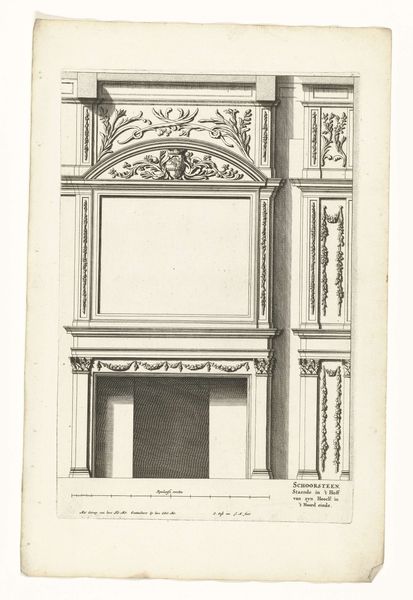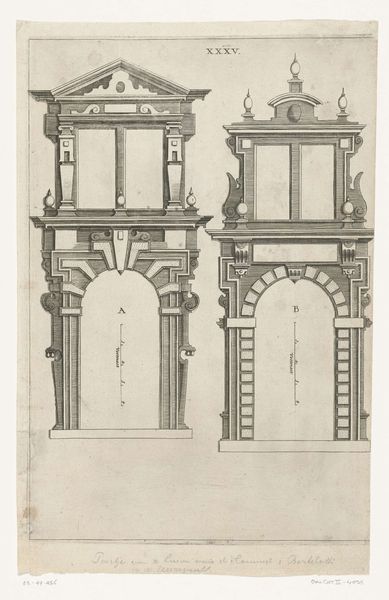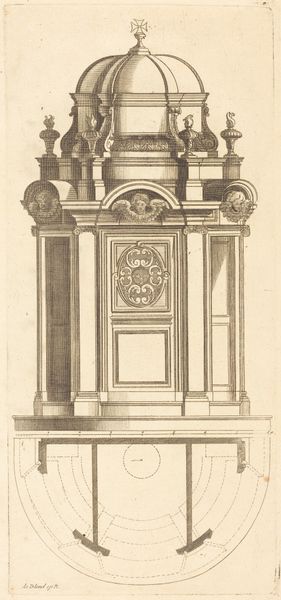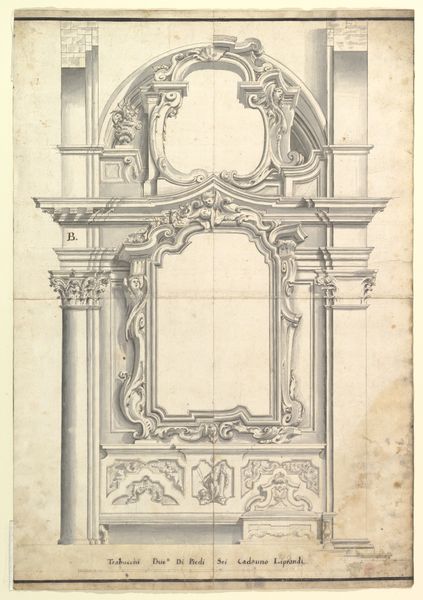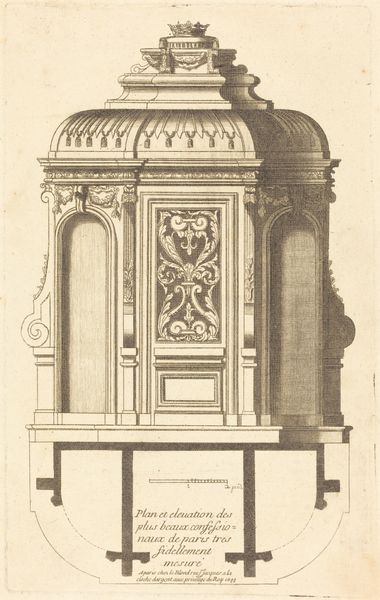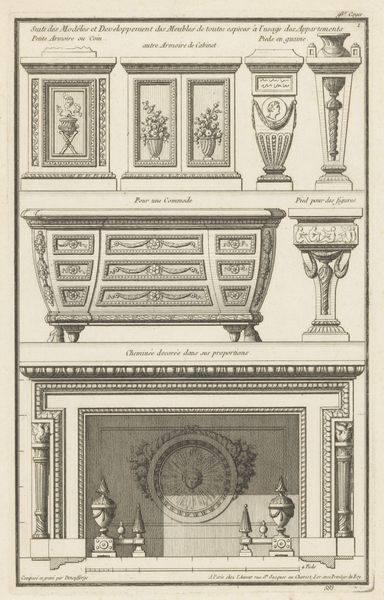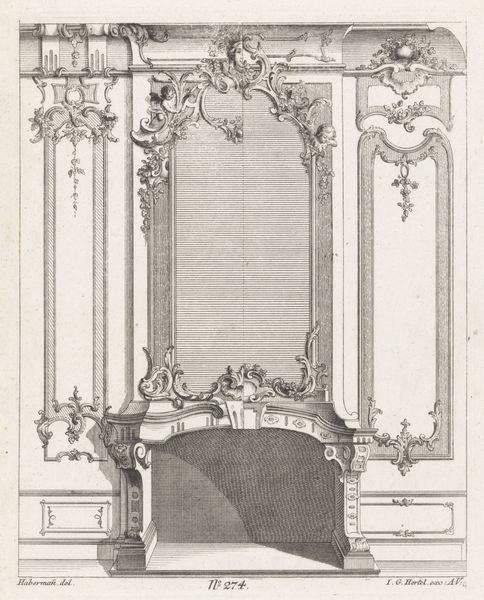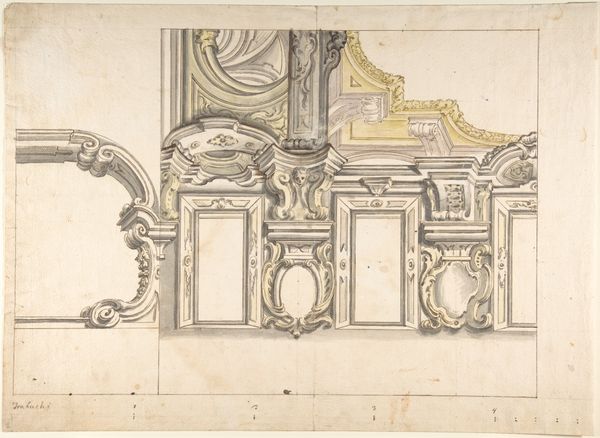
drawing, paper, pen, architecture
#
drawing
#
neoclacissism
#
paper
#
geometric
#
architectural drawing
#
pen
#
decorative-art
#
architecture
Dimensions: height 301 mm, width 211 mm
Copyright: Rijks Museum: Open Domain
Curator: Upon initial viewing, what draws you in most about this drawing titled "Omlijstingen met gezicht," crafted by Lukas Voch around 1788? Editor: The symmetry is quite striking, and there's something almost unsettling about the cherubic face embedded within these architectural designs. It blends the sacred with the structural in a very compelling way. What can you tell me about the medium? Curator: Certainly. Voch employed pen on paper for this work, which aligns with the Neoclassical art movement it's categorized within, and decorative art of that period. It’s fascinating how the use of these materials allows for such detailed representation of these architectural elements. Imagine the hand that drafted these plans. Editor: The architectural flourishes—those meticulously rendered ornaments—suggest a preoccupation with status. The emblems, cartouches, and, as I mentioned, the prominent face… they seem steeped in historical symbolism, signaling power and legacy. I wonder what social circles they were intended for. Curator: It’s displayed at the Rijksmuseum now, offering insights into 18th-century society’s aspirations for permanence. What is implied, though, about access, luxury, and maybe even religious iconography, when all are meant for potential consumers in the act of design. Editor: Agreed, the work speaks to an interesting tension: on one hand, an invitation into an artistic or intellectual exercise, but only after the social sorting and cultural literacy are satisfied. That cupid suggests religious authority sanctioned the upper-class taste. It’s almost cheeky. Curator: Interesting take. I'm more fascinated by the construction details. Each stroke had intent and informs future interpretations. A marriage of technique and utility here reveals art and design informing consumption and use, really. Editor: Perhaps so. It shows to me how Neoclassical artists drew on antique aesthetics to convey not only ideals, but beliefs about order and destiny. From the feathered details on either side of the angelic head, down to the lines scored in the base of each plan—the details all speak of eternal structures, on both earthly and cosmic planes. Curator: Well, whether through aesthetic pleasure, status aspirations, the promise of the Neoclassical, or simply the art-making labor and skill on display—this detailed drawing by Voch delivers multiple readings. Editor: Absolutely. I appreciate how examining those artistic and cultural building blocks reshapes my impression of the work.
Comments
No comments
Be the first to comment and join the conversation on the ultimate creative platform.

